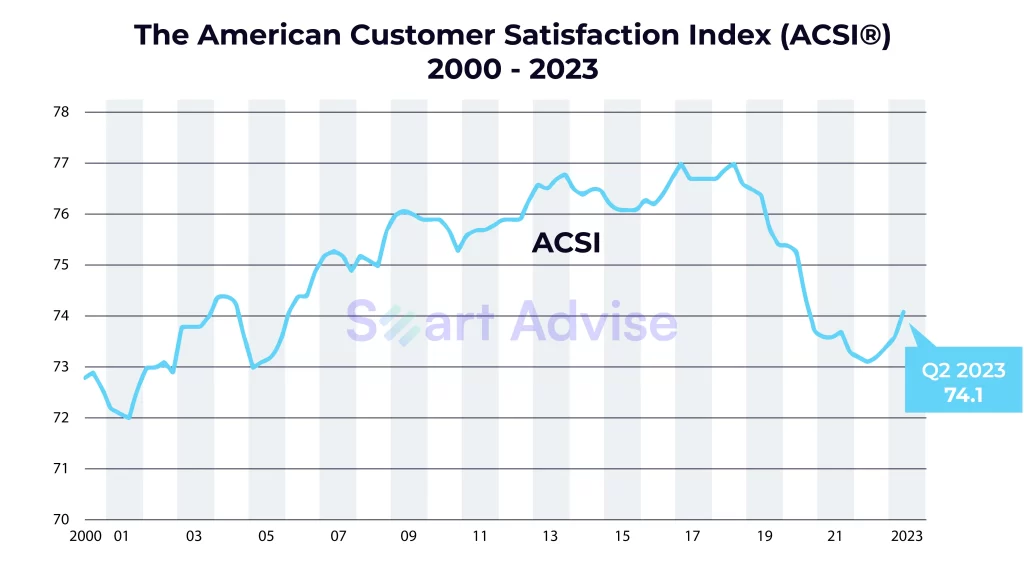
Customer satisfaction surveys have contributed to substantial profits for businesses that have gotten it right
The most organic growth that any brand can get is totally relied on customer satisfaction. And if that is not measured rightly, your business will get a complete baffled reaction to the product. Thus, affecting further actions. Here, customer satisfaction surveys come as a vital tool in the arsenal of market researchers and businesses alike. They provide invaluable insights into customer experiences, preferences, and expectations. Further, we will delve into how customer satisfaction surveys are used in market research, exploring their significance and methodology.
The Significance of Customer Satisfaction Surveys
Measuring Customer Satisfaction: The primary objective of customer satisfaction surveys is to gauge how satisfied customers are with a product, service, or brand. This measure is critical because satisfied customers are more likely to become loyal, repeat customers, and even brand advocates.
Identifying Pain Points: Surveys help identify areas where customers may be dissatisfied. This could range from the quality of a product to the efficiency of customer service. Understanding these pain points allows businesses to make necessary improvements.
Competitive Benchmarking: Comparing their performance with that of competitors, businesses can determine where they stand in the market. This information can be pivotal in devising strategies to gain a competitive edge.
Product and Service Improvement: Customer feedback provides actionable insights into product or service enhancement. Companies can make informed decisions regarding changes, updates, or the introduction of new offerings based on this feedback.
Building Customer Loyalty: A satisfied customer is more likely to remain loyal. Thus, understanding what satisfies customers is key to retaining them.
Predictive Power: These surveys not only reflect past experiences but can also predict future customer behavior. High satisfaction scores often correlate with increased likelihood of repeat purchases and positive word-of-mouth referrals.
Segmentation: Customer satisfaction surveys allow businesses to segment their customer base. This segmentation helps in tailoring marketing efforts, products, and services to meet the unique needs of different customer groups.
Resource Allocation: They help in optimizing resource allocation. In accordance with areas of low satisfaction, businesses can allocate resources more efficiently to address specific issues and improve overall customer experience.
Employee Satisfaction: Employee satisfaction often parallels customer satisfaction. These surveys can indirectly gauge employee morale and engagement, which, in turn, can impact customer interactions and satisfaction levels.
Benchmarking Progress: Over time, businesses can track changes in customer satisfaction scores, enabling them to assess the effectiveness of their efforts to improve products and services. This continuous feedback loop aids in ongoing improvement.
Crisis Management: In times of crisis, such as a product recall or a service disruption, customer satisfaction surveys provide a valuable channel for gathering immediate feedback, allowing for rapid response and damage control.
Methodology of Customer Satisfaction Surveys
Survey Design: Creating a well-structured survey is the first step. The questions you ask ought to be concise, pertinent, and easy to understand. The survey can be administered through various channels, including online forms, emails, telephone calls, or in-person interviews.
Sampling: Deciding who to survey is crucial. Researchers must ensure the sample is representative of the target population. Random sampling, stratified sampling, or convenience sampling can be used depending on the research goals and available resources.
Data Collection: Surveys can be conducted in various ways, such as online, over the phone, or in-person. The choice of method can impact response rates and data quality. Online surveys are becoming increasingly popular due to their cost-effectiveness and ability to reach a broad audience quickly.
Data Analysis: The data analysis process begins after data collection. This involves quantitative analysis, where statistical tools are used to identify patterns, correlations, and trends in the data. Qualitative analysis may also be used for open-ended responses to gain deeper insights.
Reporting: The findings from the survey are compiled into a comprehensive report. This report includes an analysis of the data, insights derived from the survey, and recommendations for action.
Factious Data
To underline the significance of customer satisfaction surveys, let’s look at some recent statistical data:
1.The American Customer Satisfaction Index (ACSI)
According to the ACSI, customer satisfaction in the United States reached an average score of 73.6 (out of 100) in 2023. The marginal difference is visible throughout the decade (as shown in the image), but it signifies an upward trend in overall customer satisfaction across various industries.

The ACSI also reported that companies scoring higher in customer satisfaction tend to outperform their competitors. For instance, companies with high ACSI scores saw higher stock returns and increased customer loyalty.
2. Harvard Business Review (HBR)
According to HBR, customer satisfaction surveys have a profound impact on customer retention. Their research suggests that increasing customer retention rates by just 5% can increase profits by 25% to 95%. This statistic underscores the financial implications of understanding and improving customer satisfaction through surveys.
3. Statista
Statista’s as of 2021, About 20% of the money spent on market research around the world in 2021 went to CRM systems (customer happiness) surveys.
4. Deloitte’s Global Contact Survey
Deloitte’s research found that 62% of companies view customer experience delivered through surveys and feedback as a competitive differentiator. This data underscores how businesses are increasingly prioritizing customer satisfaction surveys to gain a competitive edge.
Closure
Customer satisfaction surveys are indispensable tools. They provide businesses with valuable insights into customer experiences and preferences, enabling them to make decisions that can lead to an increase in customer loyalty, improved products and services, and ultimately, higher profits. This practice is considered as the most basic and first to do in market research, and so to stay relevant with more such factious data, connect with us now, and grow your mark in the field.